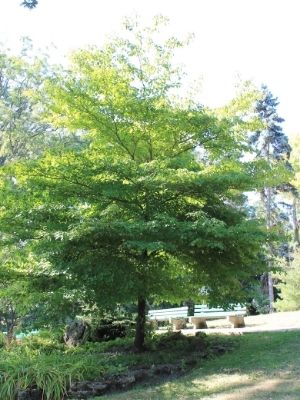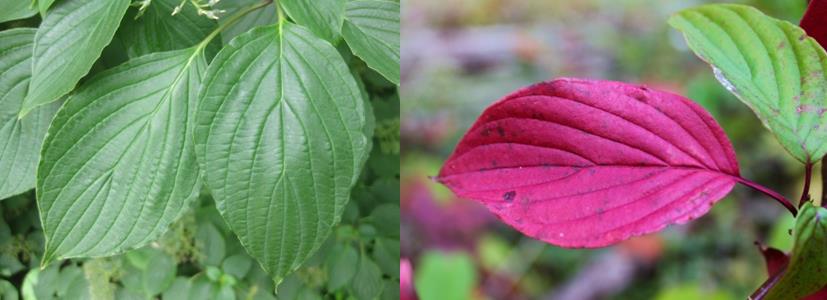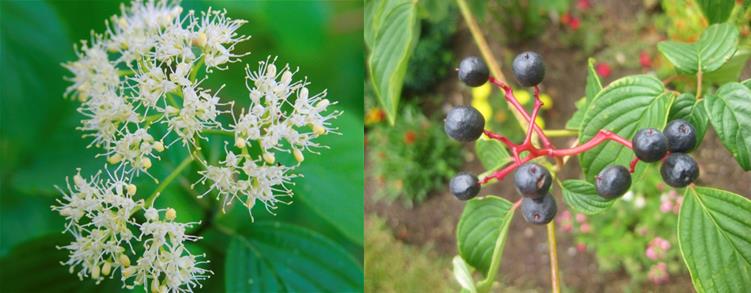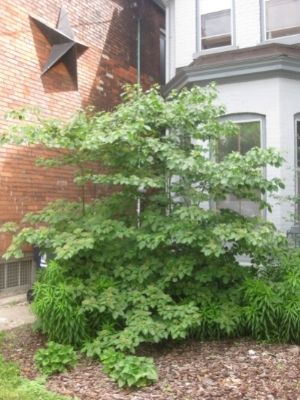Also commonly known as the alternate leaf dogwood, the pagoda dogwood is a member of the Cornaceae family. The genus Cornus comes from the Latin word cornu, meaning horn, which likely refers to the hardiness, strength and density of the wood. The specific epithet alternifolia refers to the alternating arrangement of leaves and branches, a characteristic distinct to the pagoda dogwood, as all other native dogwood leaves and branches are oppositely arranged.

The pagoda dogwood is naturally an understory species, which means it can tolerate partially sunny to shady growing conditions. As an inherently smaller growing single stem tree species, the pagoda dogwood may also grow as a multi-stemmed shrub, reaching an average height and width of about 15 to 20 feet at maturity. The bark is smooth and greenish-brown to red when young and becomes fissured and grey to brown in colour when mature. Simple, ovate leaves with smooth edges and distinct veins emerge in the spring, clustered near the branch tips, creating an umbrella-like shade. Leaves are often darker green in colour on top and a paler green colour below, turning a brilliant shade of red to purple in the fall.


Although the pagoda dogwood is known for its unique stature and striking physical features, it is also very beneficial to wildlife, providing much needed food and shelter for local birds, pollinators and small mammals. The distinctive horizontal branching and upward, clustered leaves create the perfect oasis for nesting birds such as robins, waxwings and purple finches. Those same leaves are also an excellent food source for many caterpillars. The flowers support a number of native miner bees and the berries, twigs and buds are enjoyed by a wide variety of birds and small animals including ruffed grouse, thrushes, northern cardinals, eastern cottontail rabbits and chipmunks.

As you can see, the pagoda dogwood is a perfect addition for smaller yards with either partial sun or shadier conditions. So, if you are interested in learning more about the pagoda dogwood, check out LEAF’s website for more information on the Backyard Tree Planting Program and sign up for a consultation with one of our arborists today!
Brenna Anstett is the Residential Planting Programs Manager at LEAF.
LEAF offers a subsidized Backyard Tree Planting Program for private property. The program is supported by the City of Toronto, the Regional Municipality of York, the City of Markham, the Town of Newmarket, the Regional Municipality of Durham, the Town of Ajax, the City of Oshawa, the City of Pickering, the Township of Scugog, the Town of Whitby, Ontario Power Generation, Ontario Trillium Foundation and GrandTrees/Canadian Trees For Life.
